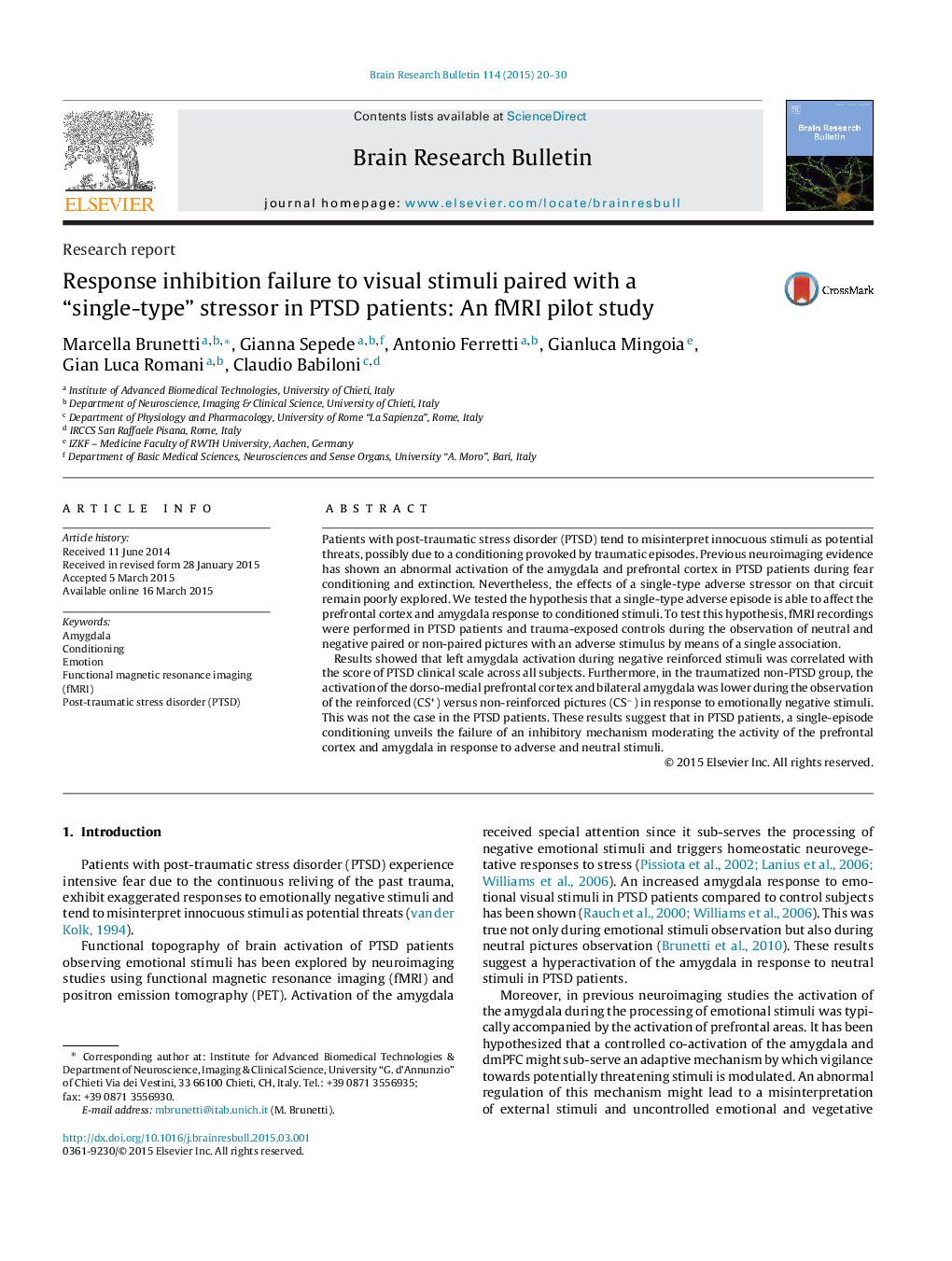| Article ID | Journal | Published Year | Pages | File Type |
|---|---|---|---|---|
| 6261690 | Brain Research Bulletin | 2015 | 11 Pages |
â¢Abnormal activation of amygdala and prefrontal cortex in PTSD was demonstrated.â¢Here the effects of a single adverse stressor on this circuit are tested.â¢FMRI is recorded during observation of negative and neutral pictures.â¢Pictures are paired (CS+) or not (CSâ) with a single adverse startle.â¢Controls but not PTSD patients show lower amygdala/PFC activation during CS+ than CSâ.
Patients with post-traumatic stress disorder (PTSD) tend to misinterpret innocuous stimuli as potential threats, possibly due to a conditioning provoked by traumatic episodes. Previous neuroimaging evidence has shown an abnormal activation of the amygdala and prefrontal cortex in PTSD patients during fear conditioning and extinction. Nevertheless, the effects of a single-type adverse stressor on that circuit remain poorly explored. We tested the hypothesis that a single-type adverse episode is able to affect the prefrontal cortex and amygdala response to conditioned stimuli. To test this hypothesis, fMRI recordings were performed in PTSD patients and trauma-exposed controls during the observation of neutral and negative paired or non-paired pictures with an adverse stimulus by means of a single association.Results showed that left amygdala activation during negative reinforced stimuli was correlated with the score of PTSD clinical scale across all subjects. Furthermore, in the traumatized non-PTSD group, the activation of the dorso-medial prefrontal cortex and bilateral amygdala was lower during the observation of the reinforced (CS+) versus non-reinforced pictures (CSâ) in response to emotionally negative stimuli. This was not the case in the PTSD patients. These results suggest that in PTSD patients, a single-episode conditioning unveils the failure of an inhibitory mechanism moderating the activity of the prefrontal cortex and amygdala in response to adverse and neutral stimuli.
